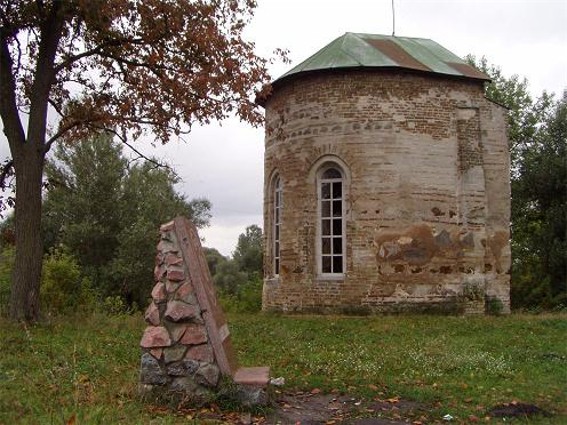Pereiaslav principality
Pereiaslav principality [Переяславське князівство; Pereyaslavske knyazivstvo]. In the early history of Ukraine the territory of northern Left-Bank Ukraine was inhabited by the Slavic tribes of the Siverianians and, closer to the Dnipro River, Polianians and was ruled by the grand princes of Kyiv. In his will Prince Yaroslav the Wise designated an appanage principality with its capital in Pereiaslav and bequeathed it to his son, Vsevolod Yaroslavych, who ruled it from 1054. When Vsevolod ascended the Kyivan throne in 1078, he continued ruling Pereiaslav principality as well.
While it was independent, the principality bordered on Kyiv principality along the Dnipro River and the Desna River to the west, and was separated from Chernihiv principality to the north and northeast by the Oster River, the inaccessible marshes of the Smolynka River, a tributary of the Seim River, and the Romen River and the Sula River (see Sula region). Until the first half of the 12th century the principality also controlled the Seim region (Posemia) as far east as Kursk. Its southern and eastern borders reached at times as far as the Sosna River, a right tributary of the Don River, and the upper reaches of the Oskil River and the Orel River, but fluctuated because of constant incursions of the Pechenegs, Torks, and Cumans. In favorable times Ukrainian colonization of that frontier moved along the Vorskla River and the Sula River. Apart from Pereiaslav the principality's important fortified towns were Lukoml, Osterskyi Horodets (now Oster), Pryluky, Pyriatyn, and Voin.
The principality bore the brunt of repeated Cuman attacks on Kyivan Rus’, and its princes, notably Vsevolod Yaroslavych and his son Volodymyr Monomakh, who ruled the principality from 1094 to 1113, waged war against the Cumans, often together with other princes. Subsequent partitions of the Ukrainian lands among the princely dynasties reduced the principality to a second-rate appanage that was repeatedly annexed by the more powerful princes. To relieve that unfavorable situation the principality's inhabitants tried to find a dynasty who would help them fight the marauding nomads but not interfere too much in their internal affairs. In the end they chose the northern Rus’ Monomakhovych princes of Suzdal, who ruled from the late 12th century on. The rulers of the principality included Monomakh's brother, Rostyslav; Monomakh's sons, Sviatoslav, Yaropolk II Volodymyrovych, Yurii Dolgorukii, Andrii, and Viacheslav Volodymyrovych; Vsevolod and Iziaslav Mstyslavych, and Iziaslav's son, Mstyslav Iziaslavych; Dolgorukii's sons, Rostyslav Yuriiovych, Hlib Yuriiovych, and Vsevolod Velyke Hnizdo; Hlib's son, Volodymyr; the Olhovych housr prince Sviatoslav III Vsevolodovych and his grandson, Mykhailo Vsevolodovych; Mstyslav Iziaslavych's cousin, Riuryk (Vasylii) Rostyslavych, and Riuryk's son, Volodymyr Riurykovych; and Vsevolod Velyke Hnizdo's sons, Konstantyn, Yaroslav, Volodymyr, and Sviatoslav.
During and after the Mongol-Tatar invasion of 1239–40 the principality suffered greatly at the hands of the invaders. It lost its political independence and was reduced to being a vassal of the Golden Horde. Ca 1360 the region came under Lithuanian rule, and in 1569 it became part of the Polish state. Hostilities between Poland and the Crimean Khanate exposed the region to ongoing Tatar raids, which halted Ukrainian colonization southeastward until the emergence of the Zaporozhian Cossacks.
BIBLIOGRAPHY
Storozhenko, A. Ocherki Pereiaslavl’skoi stariny (Kyiv 1900)
Liaskoronskii, V. Istoriia Pereiaslavl’skoi zemli s drevneishikh vremen do poloviny XIII stoletiia (Kyiv 1903)
Kuchera, M. ‘Pereiaslavskoe kniazhestvo,’ in Drevnerusskie kniazhestva X–XIII vv., ed L. Beskrovnyi (Moscow 1975)
Korinnyi, M. ‘Pereiaslavs'ka zemlia v X–pershii tretyni XIII st.,’ UIZh, 1981, no. 7
Mykhailo Zhdan
[This article originally appeared in the Encyclopedia of Ukraine, vol. 3 (1993).]

_Map.jpg)